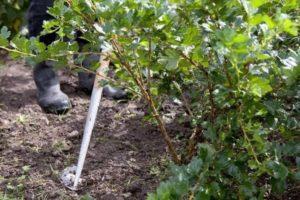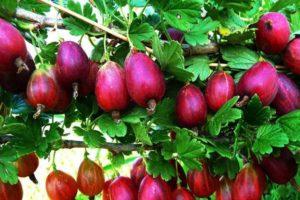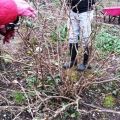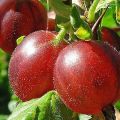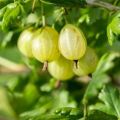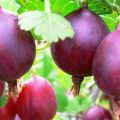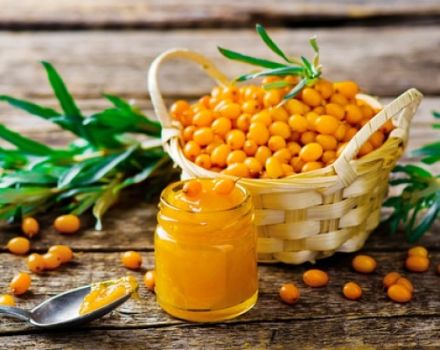Reasons why gooseberries do not bear fruit and what to do for treatment
One of the most popular berry crops - gooseberry, is distinguished by its relative unpretentiousness to growing conditions and care. It is appreciated for its unsurpassed taste and aroma of fruits, high productivity rates. But there are situations when there are no berries on it. To understand why the gooseberry has stopped bearing fruit, one should consider in more detail all the possible prerequisites for such consequences and take timely measures.
Why doesn't gooseberries bear fruit?
A plant such as gooseberry is distinguished by a sufficient level of vitality and endurance to adverse environmental factors. It gives a stable harvest for 15-20 years. But if you do not follow the rules of agricultural technology and do not take into account his preferences for external conditions, then it is unlikely that it will be possible to collect a rich harvest.
Wrong location and landing pattern
The first thing you should always remember when choosing a place for planting gooseberries is its photophilousness. It is recommended to plant shrubs exclusively in clearings that are well lit and protected from through winds. If the plant is planted in the shade of trees, then the fruits will be formed in smaller quantities and in small sizes. In addition, they lose their taste characteristics.
When planting gooseberries in areas with excessive soil moisture, the risk of freezing in winter increases, and all growth processes are suspended. Such negative phenomena are observed due to a lack of oxygen, as a result of which the gooseberry root system begins to rot. After that, the disease is transmitted to the stems, which in turn causes the absence of fruits.
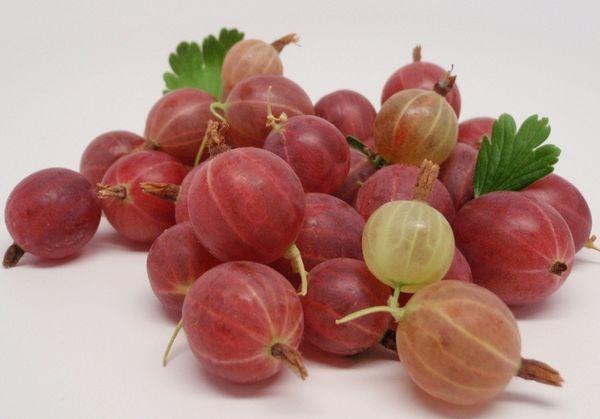
It is possible to prevent the development of putrefactive processes on the roots of gooseberries by controlling the looseness of the soil and laying a drainage layer when planting in a pit.
Gooseberry bushes that are too close together often cause poor fruiting. Plants do not receive the necessary amount of heat, light, or nutrition, which reduces the ability to form fruits. The optimal distance between gooseberry bushes is 1-1.5 meters.
Pruning a bush and extra shoots
Pruning incorrectly or made with gross errors leads to excessive thickening. Shaded young shoots grow and develop poorly. Branches over 5 years old are subject to removal, they are almost incapacitated.
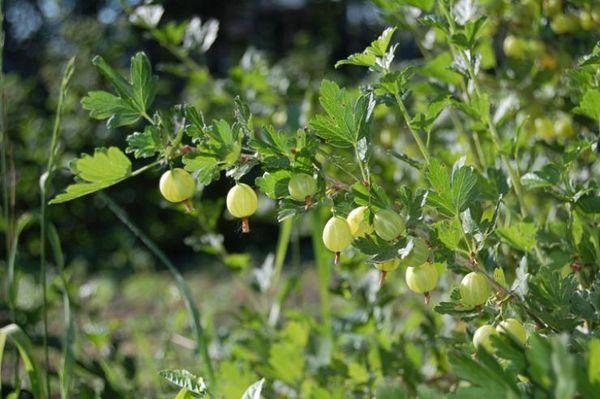
It is recommended to perform such manipulations in early spring, before bud break, or after the leaves fall, in the fall.In the first 4-5 years, pruning is performed in order to form a plant, free it from unnecessary shoots, old branches. For high-quality fruiting, gooseberries should have 20-25 powerful shoots of different ages.
Lack or excess of feeding
Do not add nutrient compounds to the soil in the first 3 years after planting gooseberry seedlings to a permanent place. This is due to a sufficient amount of fertilizer when preparing the planting pit. In the future, feeding procedures are performed 4 times per season:
- before kidney swelling;
- before the beginning of the flowering phase;
- during the period of fruit formation;
- at the end of the harvest.
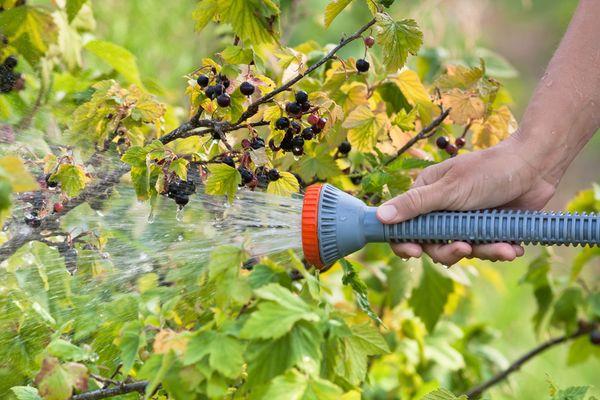
In case of violation of this feeding regime, gooseberry berries are significantly reduced in size, and then completely absent. To overdo it with nutrition is also detrimental to the plant, iron deficiency affects the yellowing of the leaves, the fall of flowers and fruits. And with a lack of phosphorus, the ovaries are dumped.
Potential diseases and pests
Most of the gooseberry varieties are characterized by increased immunity to common ailments and harmful insects. But all the same, for plant protection, it is recommended to carry out treatment with chemical preparations for prevention purposes. The bushes are vulnerable to powdery mildew, rot, anthracnose. Among the harmful insects, the greatest danger to the berry crop is represented by: aphids, kidney mites, glass, sawfly, moth.
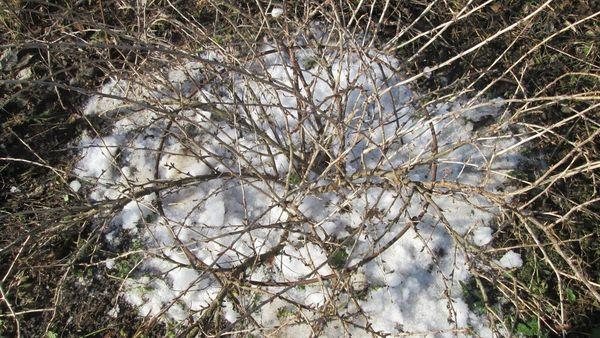
Fight diseases and parasites effectively by spraying with a solution of copper sulfate. Treatments are performed in early spring or late autumn. You should not carry out such procedures when the kidneys begin to swell. Arrivo, Decis, Mospilan work well as insecticides.
External causes
The most common reason why gooseberries do not bear fruit is the impact of severe frosts during the flowering phase of shrubs. It is negative temperatures that destroy most of the flowers and significantly reduce the productivity of the berry culture. Dry winds also negatively affect the planting of gooseberries, hot winds dry pollen, and leaf plates turn into dust.

Pollination
There is an assortment of gooseberry varieties that do not require additional pollination - cross-pollination. But if 3-5 varieties of this crop are planted close to each other, then it is possible to increase the yield indicators even in self-fertile bushes. In non-self-pollinating plants in bad weather conditions (rain, snow, wind, cold weather), due to the absence of bees, the flowers may remain unpolished.
What if the gooseberry does not bear fruit?
To achieve the desired results, you must not neglect the main rules of quality care. Particular attention should be paid to regularly pruning the gooseberries by pruning the shoots at an angle of 45-50 degrees. The main thing here is not to damage the fruit bud, the cut must be done, stepping back 5-7 centimeters from it.
If the pruning of the shoots is done too close to the location of the bud, then it is guaranteed to dry out soon. It is also not worth making a cut very high above it, there is a high probability of drying out of the part of the branch that is formed above the bud.
In addition, it is recommended not to ignore the feeding procedures. During the season, it will be necessary to add mineral complex compositions several times, and in the fall - rotted organic matter. If there are enough nutrients in the soil, then the culture will grow and develop normally, forming a large number of ovaries.

If the gooseberry does not bear fruit, then the irrigation system must be adjusted. So that the bush does not experience a moisture deficit or, on the contrary, does not grow in soil with excessive moisture, it should be watered once a week in dry weather. Water consumption per plant is 7 liters.
How to avoid problems?
In order to prevent the appearance of negative consequences in the form of the absence of fruits on the gooseberry bushes, it is necessary to adhere to certain rules of agricultural technology. For planting, you should choose exclusively sunny areas with a not close occurrence of groundwater, avoid wetlands. Plants die in damp soil.
It is recommended to apply nutrient mixtures in a timely manner and in dosage, using them in accordance with the manufacturer's instructions. Weed vegetation should be regularly removed around the bushes, which takes food from the soil and moisture. To avoid oxygen starvation of the roots, it is effective to loosen the soil after watering. And annually to prune shrubs.
Gooseberry is a culture resistant to diseases and pests, drought and frost, but proper care will only increase productivity indicators and extend the life of the plantings.
